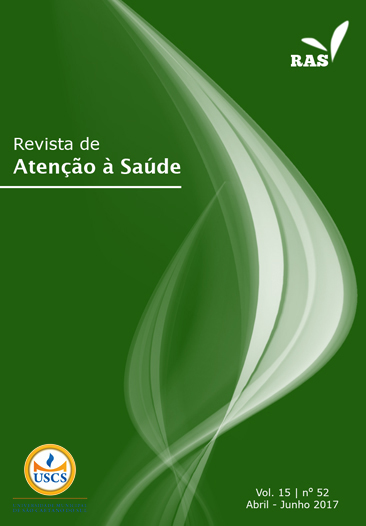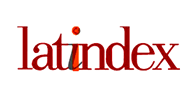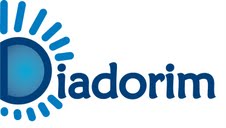Pregnancy in women with sickle cell anemia: an integrative review
DOI:
https://doi.org/10.13037/ras.vol15n52.4454Keywords:
Nursing, Risk factors, Anemia, Sickle cell, PregnancyAbstract
Objective: To analyze Brazilian scientific productions about gestation in patients with sickle cell anemia. Method: It is an integrative review study carried out in the Virtual Health Library (VHL) database, using the descriptors pregnancy and sickle cell anemia, in the periodical from 2006 to 2015. Results: The publications focused on the Southeast region of Brazil, where the number of cases is lower than in other regions. The complicating gestational factors in sickle cell anemia were anemia, infections, preterm labor, teenage pregnancy, among others. And factors that increased maternal and fetal risks were spontaneous abortion, early rupture of membranes, restricted intrauterine growth, postpartum infection, among others. Conclusion: It is necessary that the pregnant women with sickle cell anemia be accompanied by a multiprofessional reference group in high risk pregnancy, the hematologist and the primary health care team aiming at integral care and the reduction and / or control of maternal and fetal risks.
Downloads
References
1. Galiza Neto GC, Pitombeira MS. Aspectos Moleculares da Anemia Falciforme. J Bras Patol Med Lab. 2003; 39 (1): 51-6.
2. Brasil. Agencia Nacional de Vigilância Sanitária. Manual de Educação em Saúde Auto cuidado na Doença Falciforme. Brasília-DF: Ministério da Saúde; 2008.
3. Brasil. Agencia Nacional de Vigilância Sanitária. Doença Falciforme Condutas Básicas para tratamento. Brasília-DF: Ministério da Saúde; 2012.
4. Brasil. Atenção integral a saúde das mulheres. Brasília-DF: Ministério da Saúde; 2015.
5. Cox FEM, Beauquier-Maccotta B. Representações maternas durante uma gravidez patológica: o caso da anemia facilforme.
Estilos clin. 2014; 19 (2): 309-24.
6. Araújo PIC. O autocuidado na doença falciforme. Rev Bras Hematol Hemoter. 2007; 29 (3): 239-6.
7. Souza MT, Silva MD, Carvalho R. Revisão integrativa: o que é e como fazer. Einstein. 2010; 8 (1pt 1): 102-6
8. Zanette AMD. Gravidez e contracepção na doença falciforme. Rev Bras Hematol Hemoter. 2007; 29 (3): 309-12.
9. Nomura RMY, Igai AMK, Tosta K, Fonseca GHH, Guanlandro SFM, Zugaib M. Resultados maternos e perinatais em gestações complicadas por doenças falciformes. Rev Bras Ginecol Obstet. 2010; 32 (8): 405-11.
10. Monken FV, Barros NN, Valadares PJC, Macedo RSPB, Cruz SG, Cury PS et al. Situações de emergência na gestante com doença falciforme. Rev Med Minas Gerais 2010; 20 (2 Supl 1 ): S73-S77.
11. Barbosa CG, Dias LRQ, Abreu MTCL. Gravidez na adolescência e suas interações com anemia falciforme. Rev Med Minas Gerais 2012; 22 (2): 231-4.
12. Xavier ASG, Ferreira SL, Carvalho ESS, Araújo EM, Cordeiro RC. Percepción de mujeres con anemia falciforme sobre la
gestación: estudio exploratório. Online Braz J Nurs. 2013;
12 (4): 834-43.
Downloads
Published
Issue
Section
License
Copyright (c) 2017 Adiane Leal Lima, Ivonildes da Hora Santana, Técia Maria Santos Carneiro e Cordeiro, Magno Conceição das Merces, Fernanda de Oliveira Souza, Maria das Graças Santos Oliveira

This work is licensed under a Creative Commons Attribution-NonCommercial-NoDerivatives 4.0 International License.
Policy Proposal for Journals offering Free Delayed Access
Authors who publish in this magazine agree to the following terms:
- Authors maintain the copyright and grant the journal the right to the first publication, with the work simultaneously licensed under a Creative Commons Attribution License after publication, allowing the sharing of the work with recognition of the authorship of the work and initial publication in this journal.
- Authors are authorized to assume additional contracts separately, for non-exclusive distribution of the version of the work published in this magazine (eg, publishing in institutional repository or as a book chapter), with the acknowledgment of the authorship and initial publication in this journal.
- Authors are allowed and encouraged to publish and distribute their work online (eg in institutional repositories or on their personal page) at any point before or during the editorial process, as this can generate productive changes, as well as increase impact and citation of the published work (See The Effect of Open Access).









